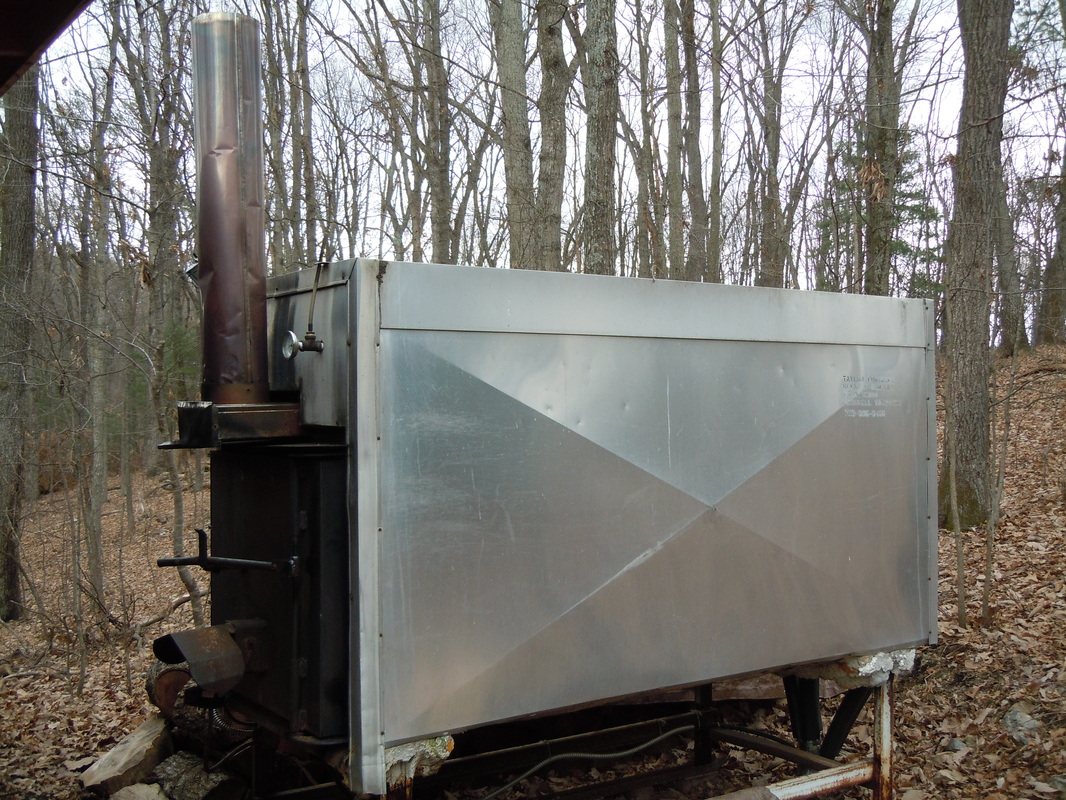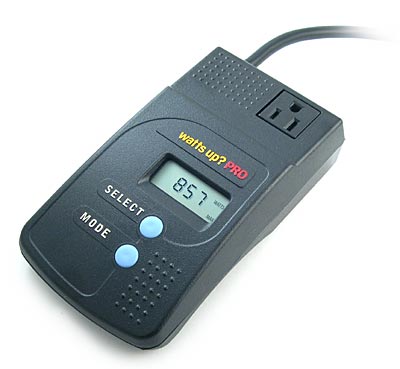What is it that prompts people to purchase and install these boilers? What makes them popular? Frankly, I'm not sure. Here are some possibilities:
1) Woodlot owners want to use a cheap and readily accessible form of energy.
2) Energy security. Independence.
3) High temperature supply (some people call this "warm heat").
4) Limited involvement. The firebox is large enough that owners only have to load wood once or twice a day.
Let's step back for a moment now, and really analyze the sensibility of purchasing or using an OWB.
HOW THEY WORK
An OWB has the following features: a large combustion chamber, a water manifold / tank, an electric fan or damper, and a short smoke stack. The OWB is coupled to the house through a number of water distribution pipes. A small water pump transfers the heated water from the OWB to the house. Inside the house, the water distribution pipes may be coupled with a hot water heater, a hydronic radiant heating system, or a heat exchange coil inside of an air handling unit.
EFFICIENCY RATINGS
According to one of just a few independent studies, the typical OWB is between 30% - 40% efficient---just half that of an indoor wood stove.
Even more disconcerting, these tests do not evaluate the amount of electricity that is consumed by the OWB. These units require electric power to operate the outdoor fan unit, the hot water pump, and oftentimes, the blower on a forced air heating system.
Although the electricity required to run the outdoor fan and water pump is small, a blower can consume a large amount of electricity. So when we add the parasitic losses of the fan, the water pump, and the blower to the calculation, the efficiency of these units becomes even more dismal.
COST
The current building code disallows wood burning appliances as primary heating systems. So the cost of an OWB is in addition to a more modern appliance---say a heat pump or propane furnace.
The cost to purchase/install an OWB and the associated plumbing can range between $8,000 - $12,000 (an Augusta County resident recently told me they had received a quote of $10,000 to replace their existing OWB). Again, let me restate: this is in addition to the cost of a building's primary heating system!
If we compare the cost of an OWB to an indoor wood stove, it is 2X - 3X more costly, even if we include the expense of a new Class A stainless steel chimney for the indoor unit.
POLLUTION
According to a study commissioned by the state of New York, OWBs produce between 4X - 12X as much particulate matter (smoke) as indoor wood stoves. When compared to a modern gas furnace, OWBs produce 1,800X more particulate matter. No wonder many localities have banned OWBs.
To make matters worse, the smoke emitted by an OWB is near the ground level (due to the short stack height of the chimney). That means the smoke from an OWB is more likely to end up in your house, in your lungs, or wafting across your neighbor's property.
CONCLUSION
So, let's review: an OWB will cost TWICE as much as an indoor woodstove, operate at HALF of the efficiency, and produce 4X - 12X more particulate matter.
If this evidence weren't damning enough, consider this: an indoor wood stove operates passively (stack effect carries the combustion gases up through the chimney). OWBs need electricity. Which one would you rather have during a winter storm induced power outage?



 RSS Feed
RSS Feed